Cities might look like endless concrete sprawls, yet they’re quietly becoming vertical gardens that’d surprise most people. Green rooftops have turned into some of the most unexpected retreats in urban landscapes — offering fresh air and killer views way above the chaotic streets. These elevated sanctuaries prove nature doesn’t just survive in dense metropolitan areas; it actually thrives there.
From Chicago’s groundbreaking installations to New York’s tucked-away treasures, these green spaces are completely changing how we view city living. Here is a list of 15 remarkable urban green rooftops that welcome visitors to experience nature from an entirely different angle.
High Line
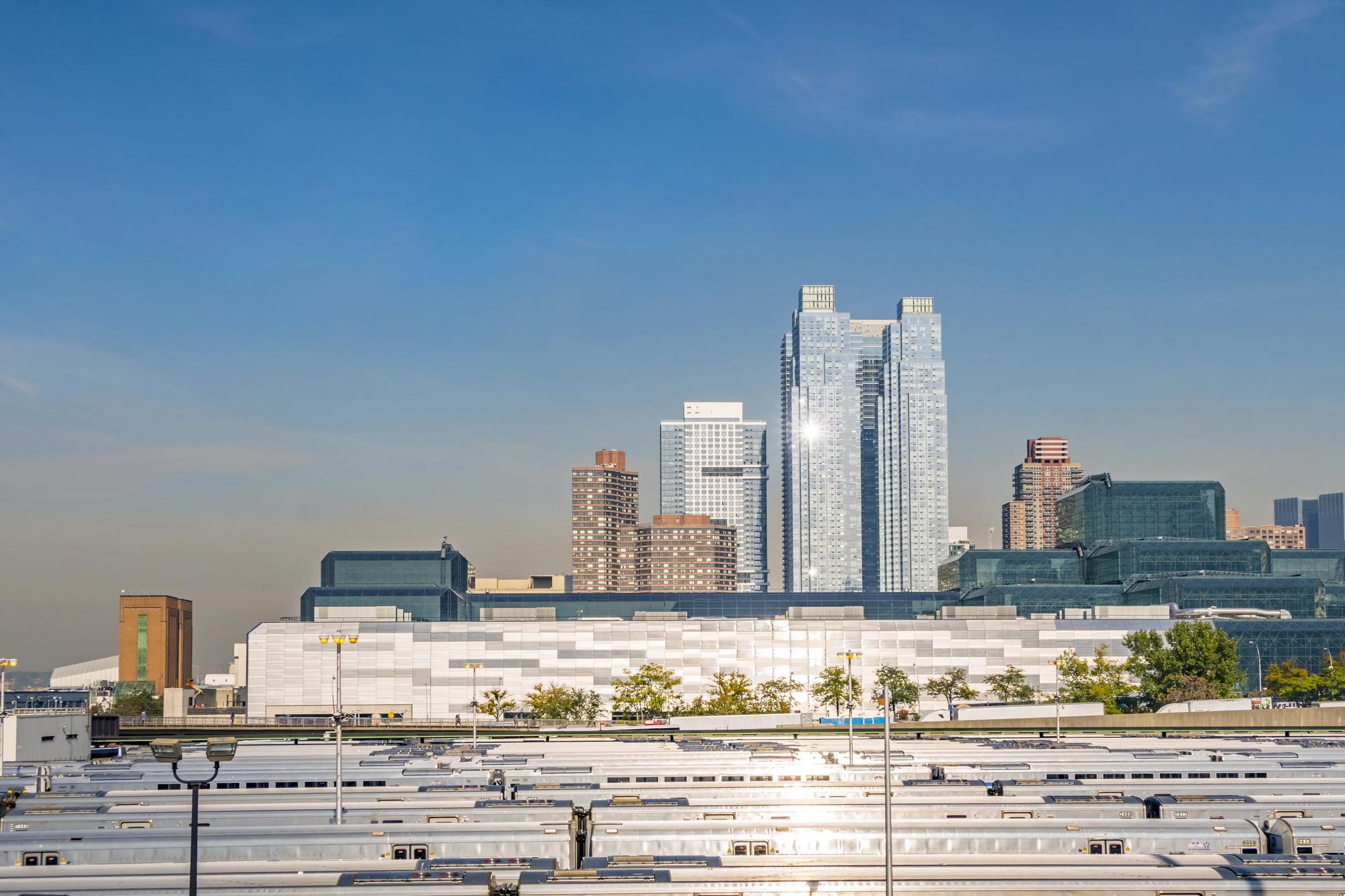
New York’s High Line took an abandoned railway and transformed it into this incredible linear park stretching 1.45 miles through Manhattan. The elevated greenway showcases native plants and wildflowers, creating what feels like a natural corridor floating above city streets.
What’s really cool is how the design actually mimics the wild vegetation that once grew on those unused tracks—giving visitors a glimpse of how nature reclaims urban spaces when left alone.
Brooklyn Grange
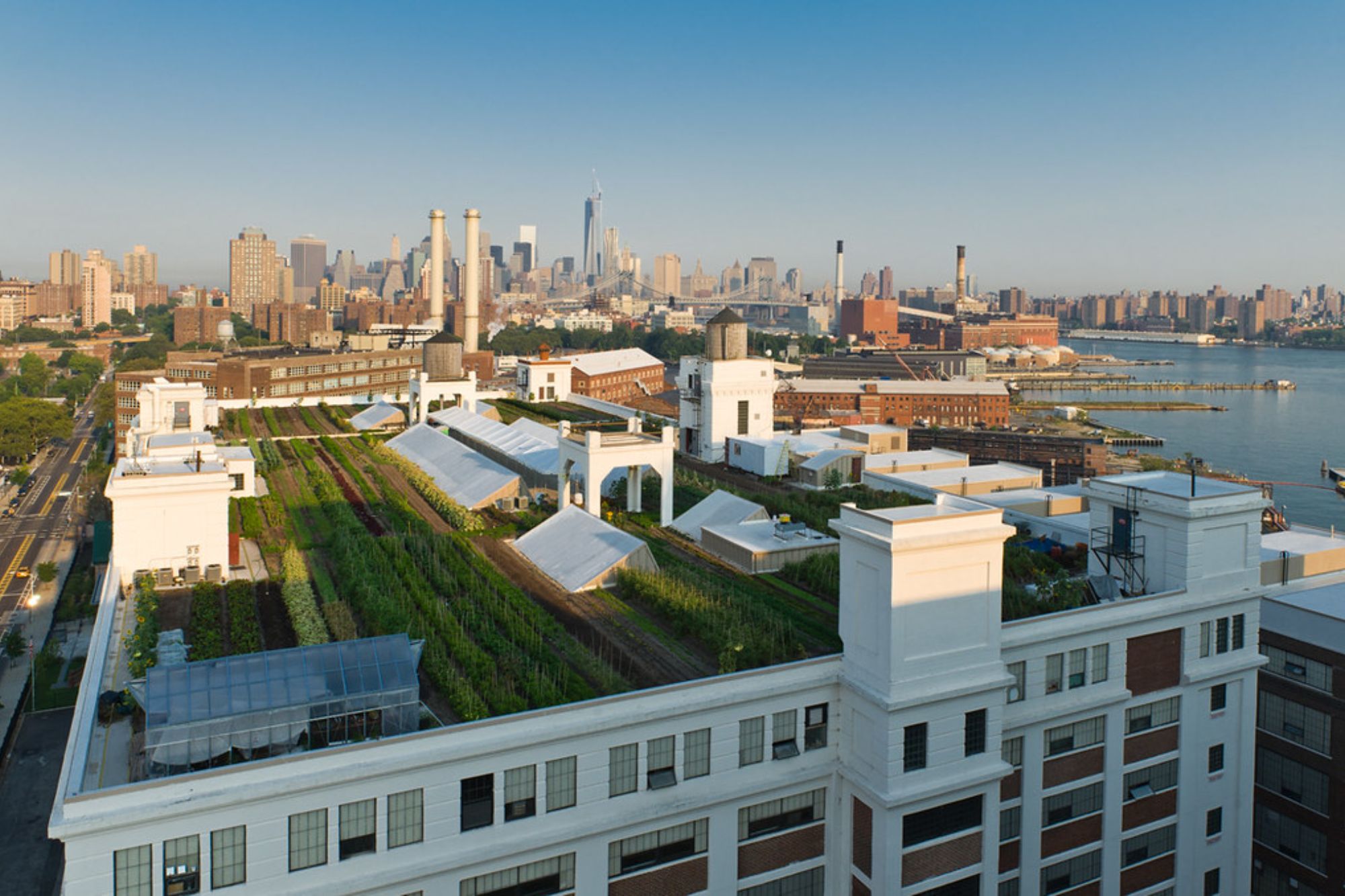
Brooklyn Grange runs the world’s largest rooftop soil farms across several New York locations, though their output is seriously impressive at over 80,000 pounds of organic vegetables each year. Their Navy Yard spot offers public tours and hosts events where people can witness urban agriculture firsthand.
The farm shows how cities can produce fresh food locally while creating green spaces that benefit both residents and wildlife.
California Academy of Sciences Living Roof
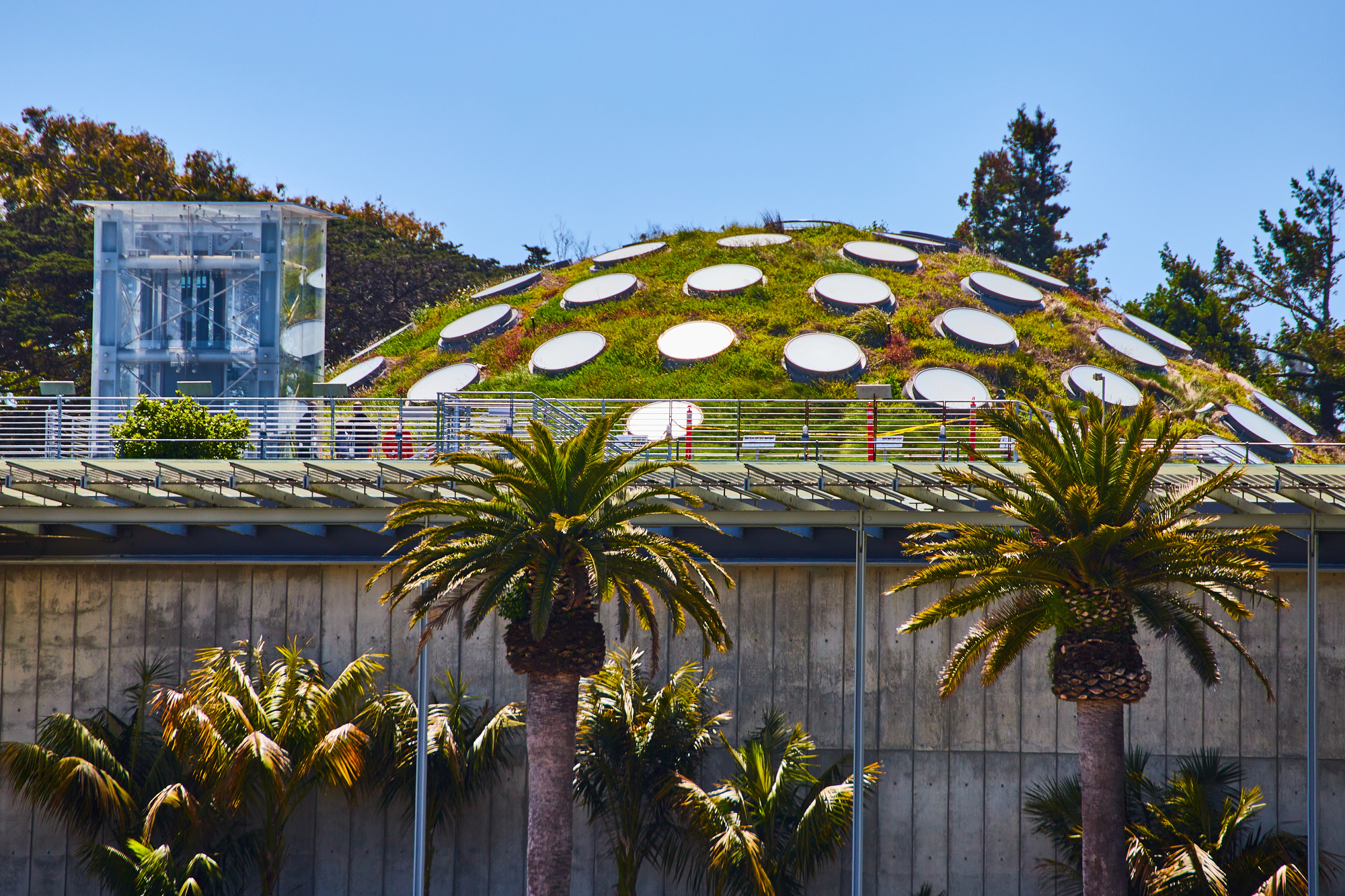
San Francisco’s California Academy of Sciences features this amazing 2.5-acre living roof covered with native California plants that actually roll and dip like natural hillsides. The roof supports nearly two million plants—representing species from across the Golden State’s incredibly diverse ecosystems.
Visitors can walk through the museum and observe this green landscape from multiple viewing spots, watching how dramatically it changes with each season.
Like Travel Pug’s content? Follow us on MSN.
Millennium Park Lurie Garden
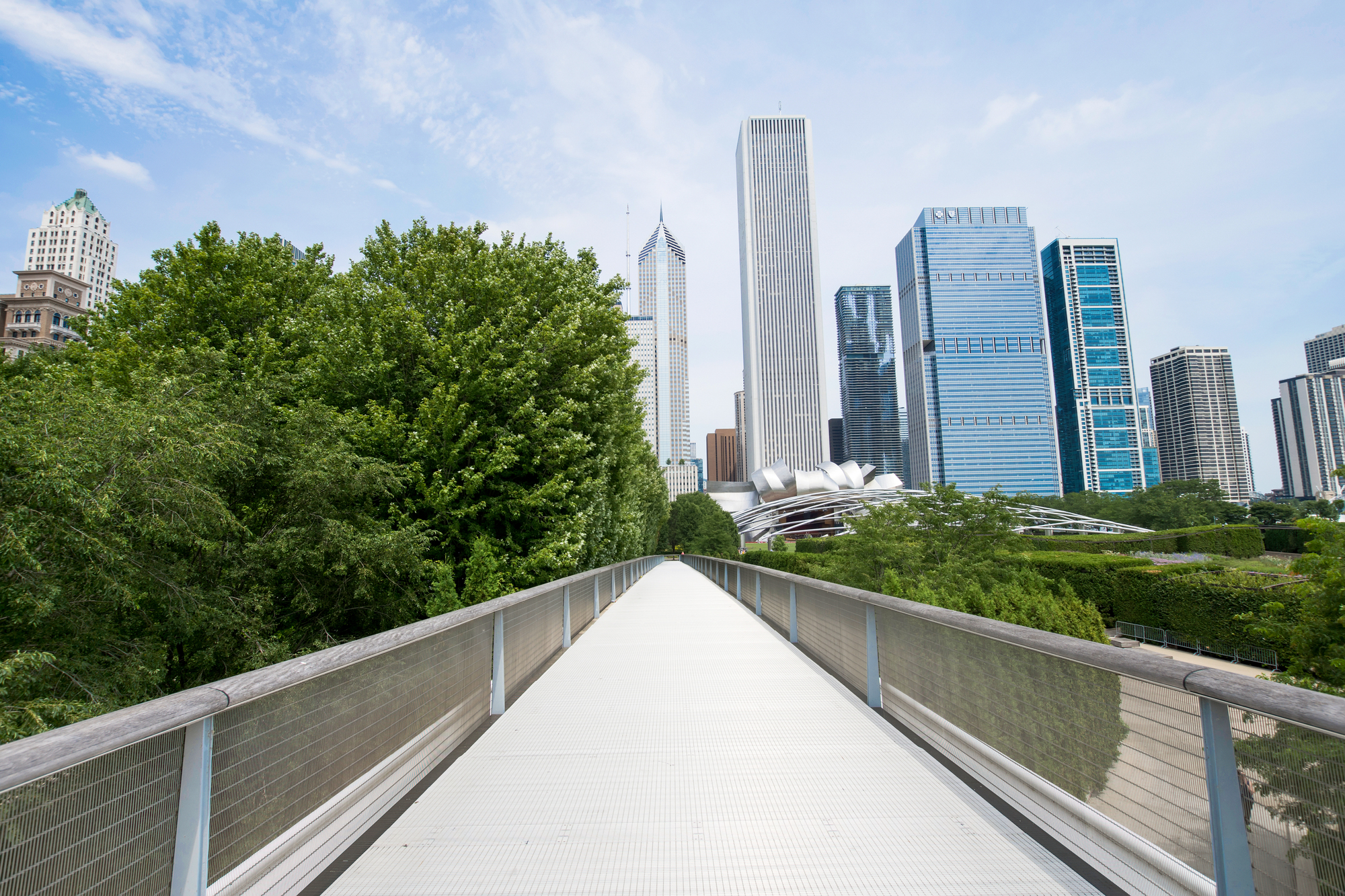
Chicago’s Lurie Garden sits right on top of underground parking structures in Millennium Park, creating a 2.5-acre prairie landscape smack in the heart of downtown. The garden features native Illinois plants that bloom throughout the growing season, which attracts butterflies and birds to this urban wetland oasis.
The design celebrates the region’s natural heritage while proving green roofs can absolutely handle Chicago’s brutal winters and sweltering summers.
Brooklyn Bridge Park
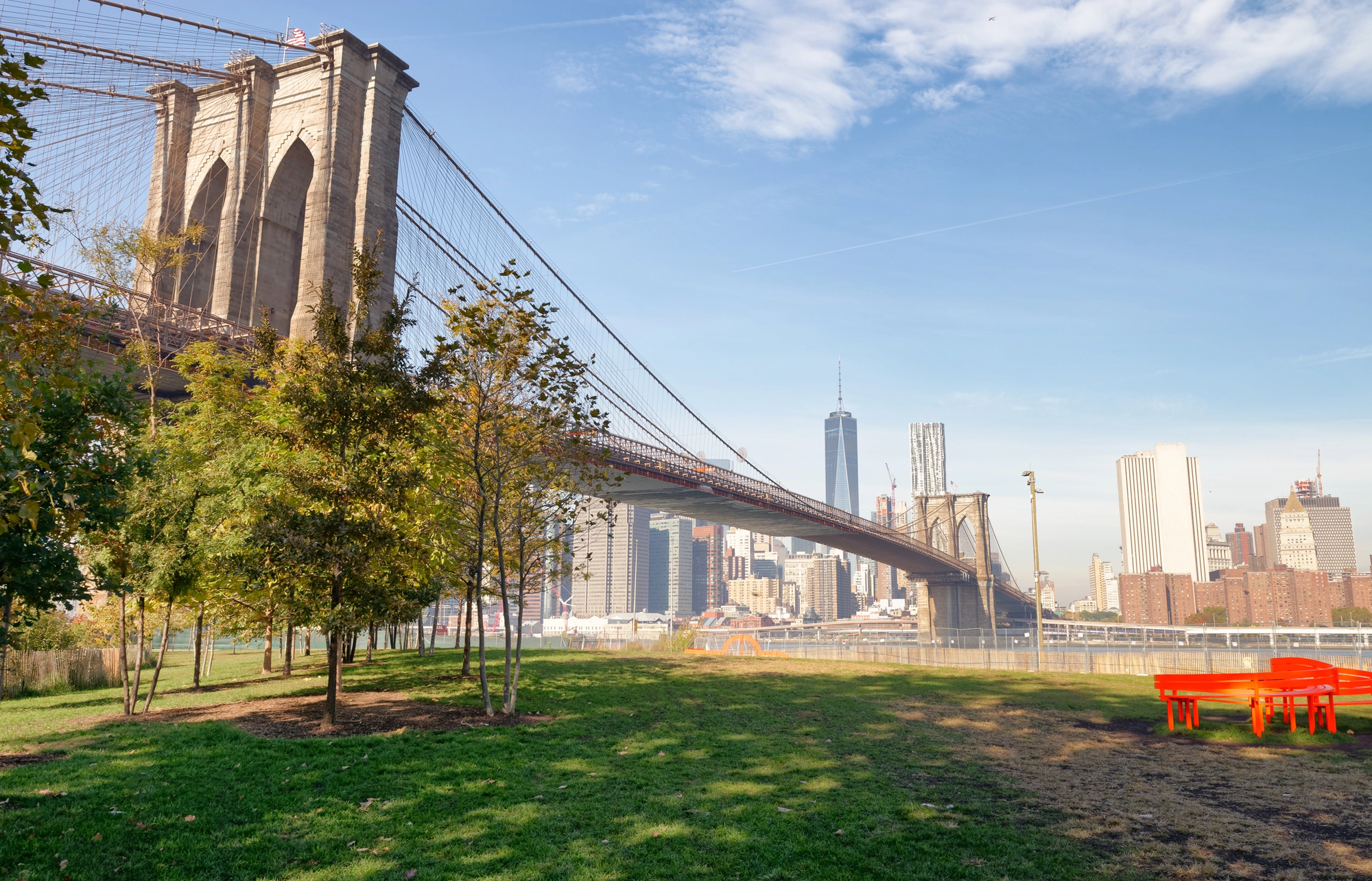
Brooklyn Bridge Park stretches along 1.3 miles of waterfront on what used to be industrial piers, with most of its 85 acres built on structures above the East River rather than solid ground. The park combines athletic fields, gardens, and natural areas that sit on engineered foundations.
This innovative approach demonstrates how cities can create extensive green spaces even when traditional parkland simply isn’t available.
200 Fifth Avenue
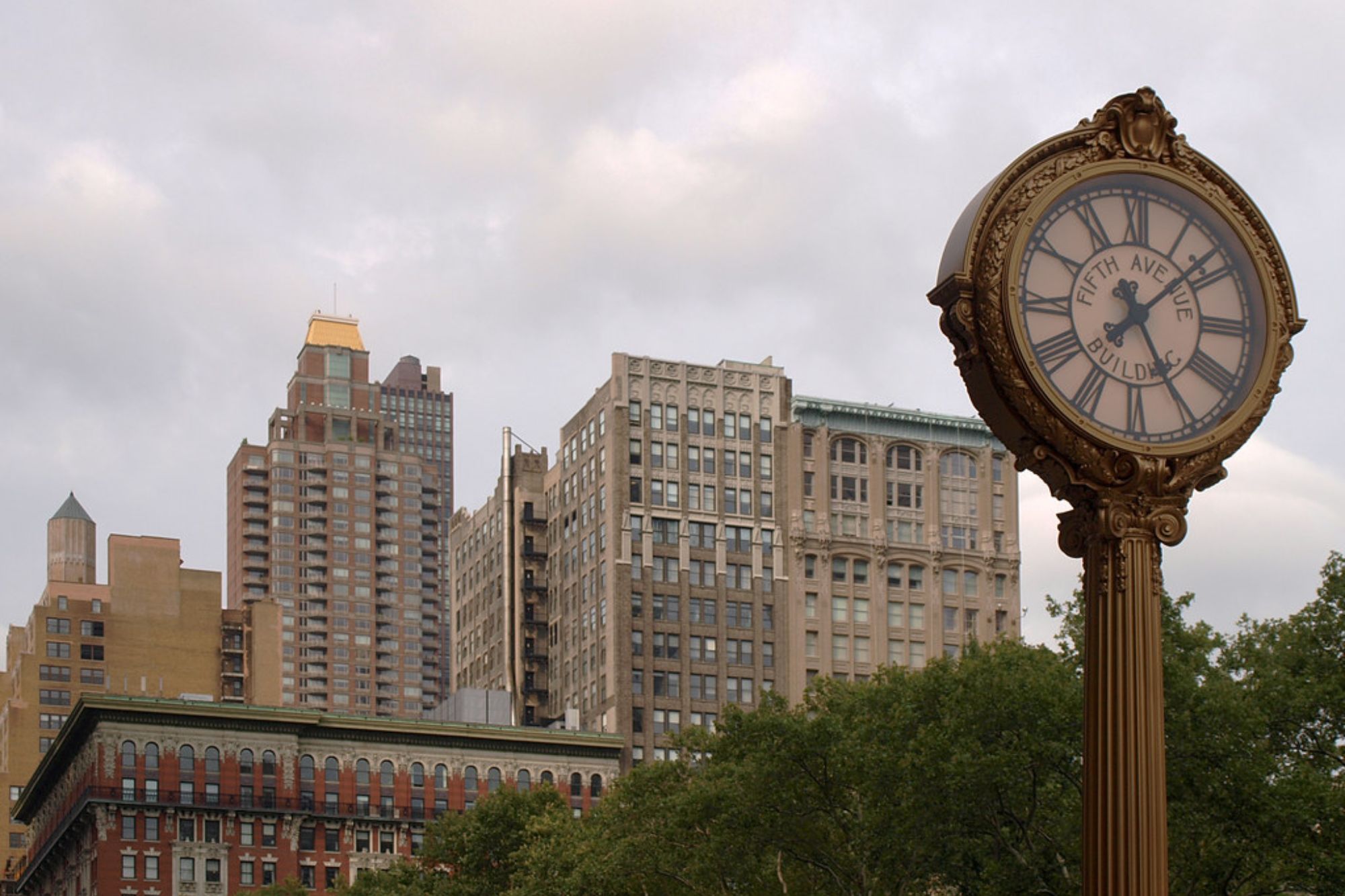
This Manhattan office building has a publicly accessible rooftop garden that offers panoramic views of the Flatiron District and Empire State Building—though the real magic happens in the planted beds that change throughout the year. The space combines comfortable seating areas with greenery, creating this peaceful retreat from the busy intersection below.
Office workers and visitors use this elevated sanctuary for lunch breaks and those much-needed quiet moments during hectic city days.
Like Travel Pug’s content? Follow us on MSN.
Gantry Plaza State Park
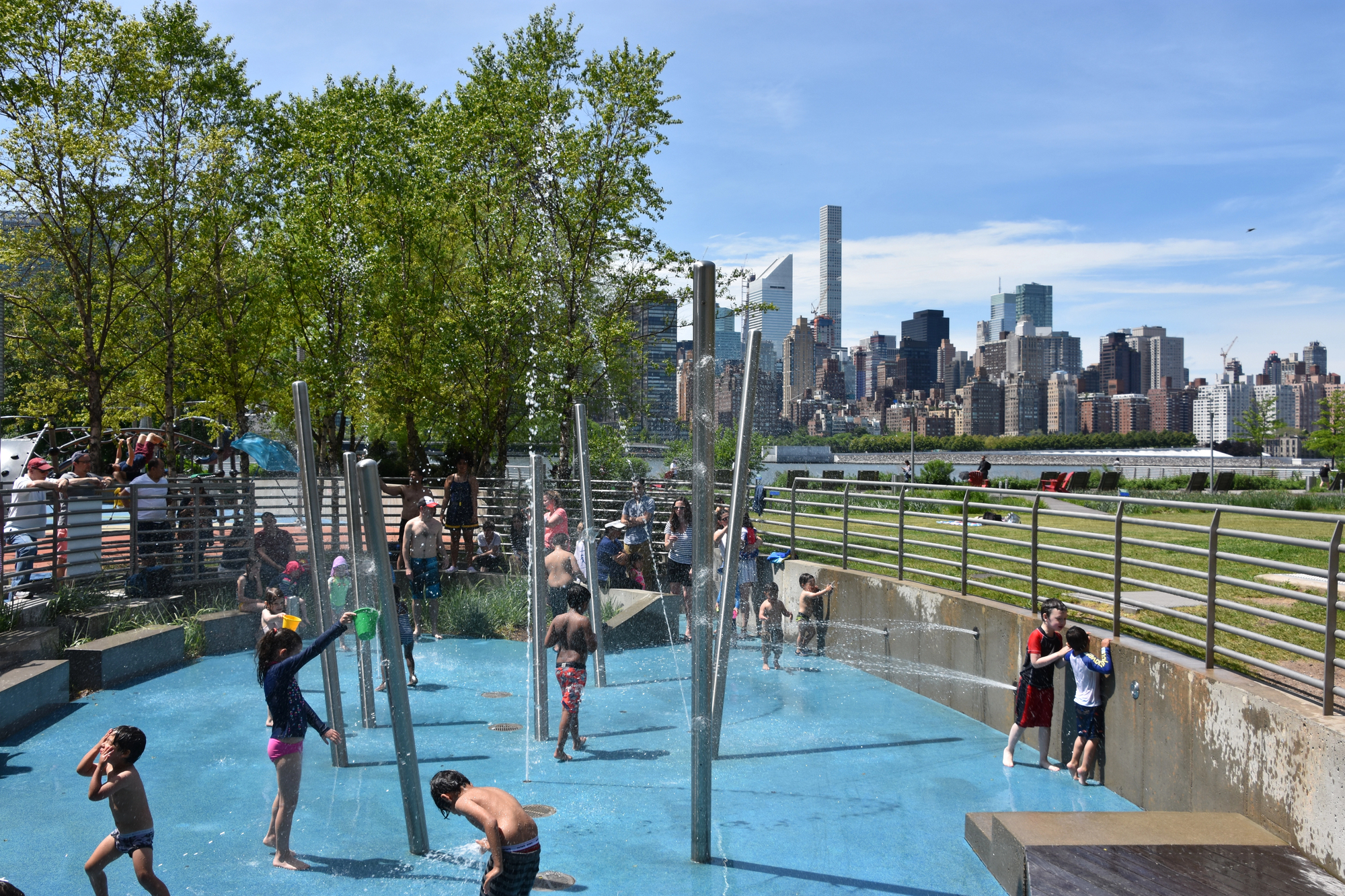
Long Island City’s Gantry Plaza State Park features elevated lawns and gardens built on former industrial waterfront property directly across from Manhattan. The park’s design cleverly incorporates the area’s shipping history while creating green spaces that seem to float above the East River—though the views are what really steal the show.
Visitors get some of the best skyline perspectives in New York while relaxing on grass that grows dozens of feet above the water.
Sky Garden at Walkie Talkie
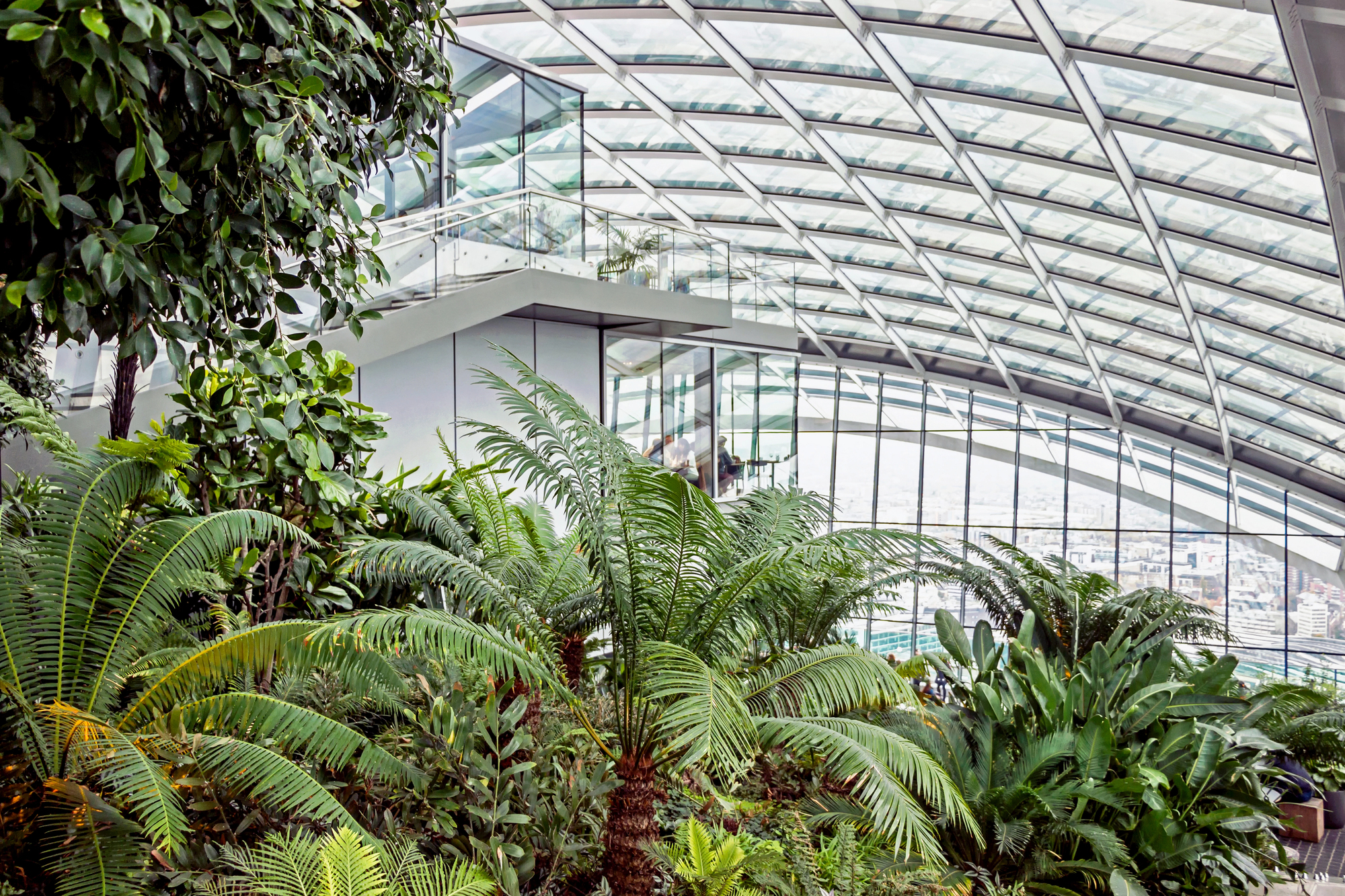
London’s Sky Garden occupies the top three floors of that distinctive Walkie Talkie building — creating a public park 525 feet above the Thames. The space features Mediterranean plants and trees arranged in terraced gardens, with floor-to-ceiling windows offering 360-degree city views that’ll leave you speechless.
This free attraction proves that even commercial skyscrapers can incorporate significant green spaces for public enjoyment.
Gardens by the Bay Supertree Grove

Singapore’s Supertree Grove features 18 vertical gardens that rise to 164 feet tall, creating an otherworldly landscape right in the city center. These tree-like structures support climbing plants while housing environmental technologies that help cool the surrounding area.
Visitors can walk among these giants at ground level, though the elevated walkway connecting several supertrees offers a canopy-level experience that’s absolutely incredible.
Like Travel Pug’s content? Follow us on MSN.
Chicago City Hall Green Roof
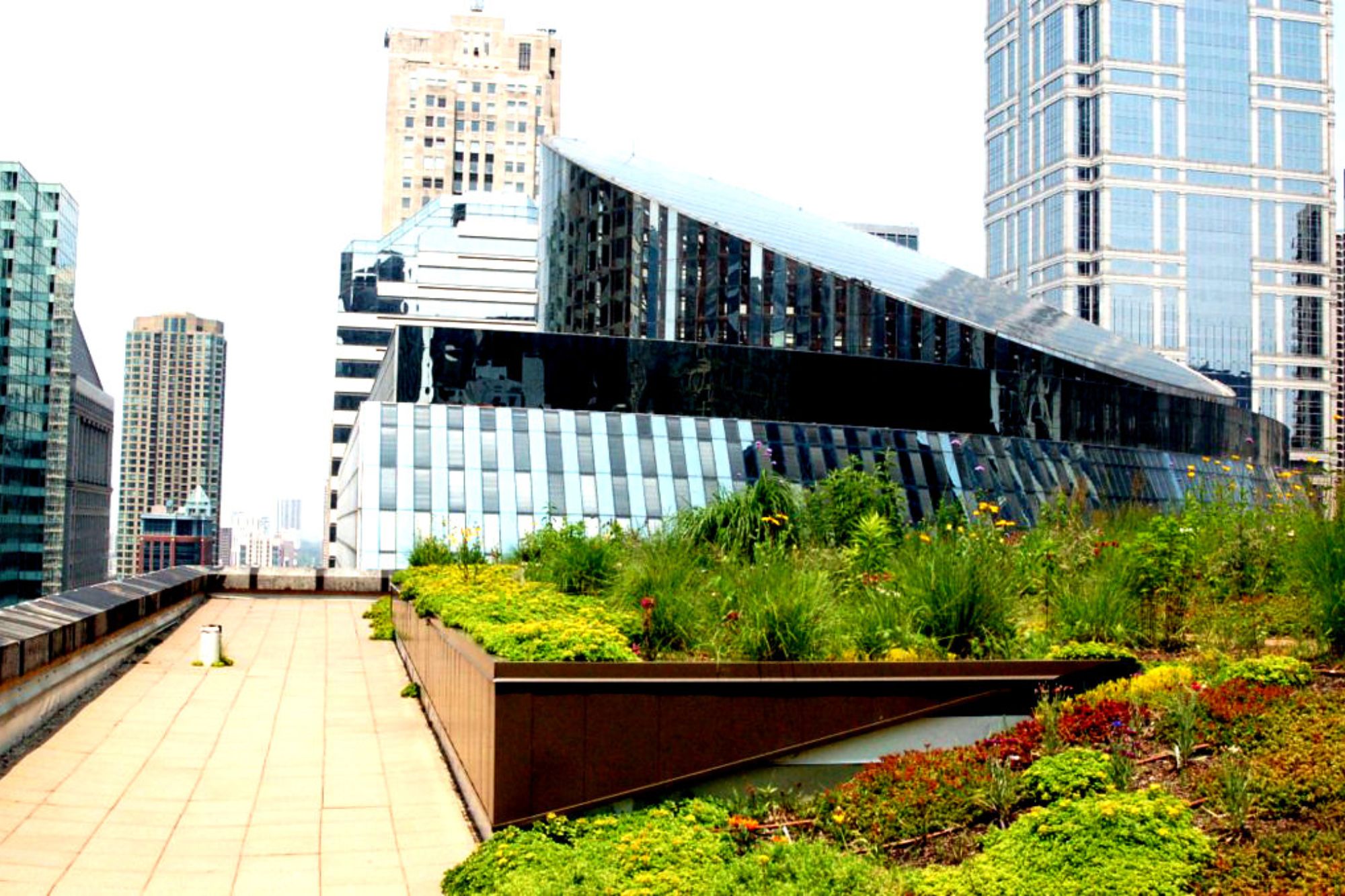
Chicago City Hall’s rooftop garden covers 20,000 square feet and demonstrates how green infrastructure works perfectly on government buildings—though the benefits go way beyond aesthetics. The installation features prairie grasses and wildflowers that reduce the building’s energy costs while managing stormwater runoff effectively.
Public tours show visitors how this early green roof project helped establish Chicago as a leader in sustainable urban development.
Ford Foundation Atrium
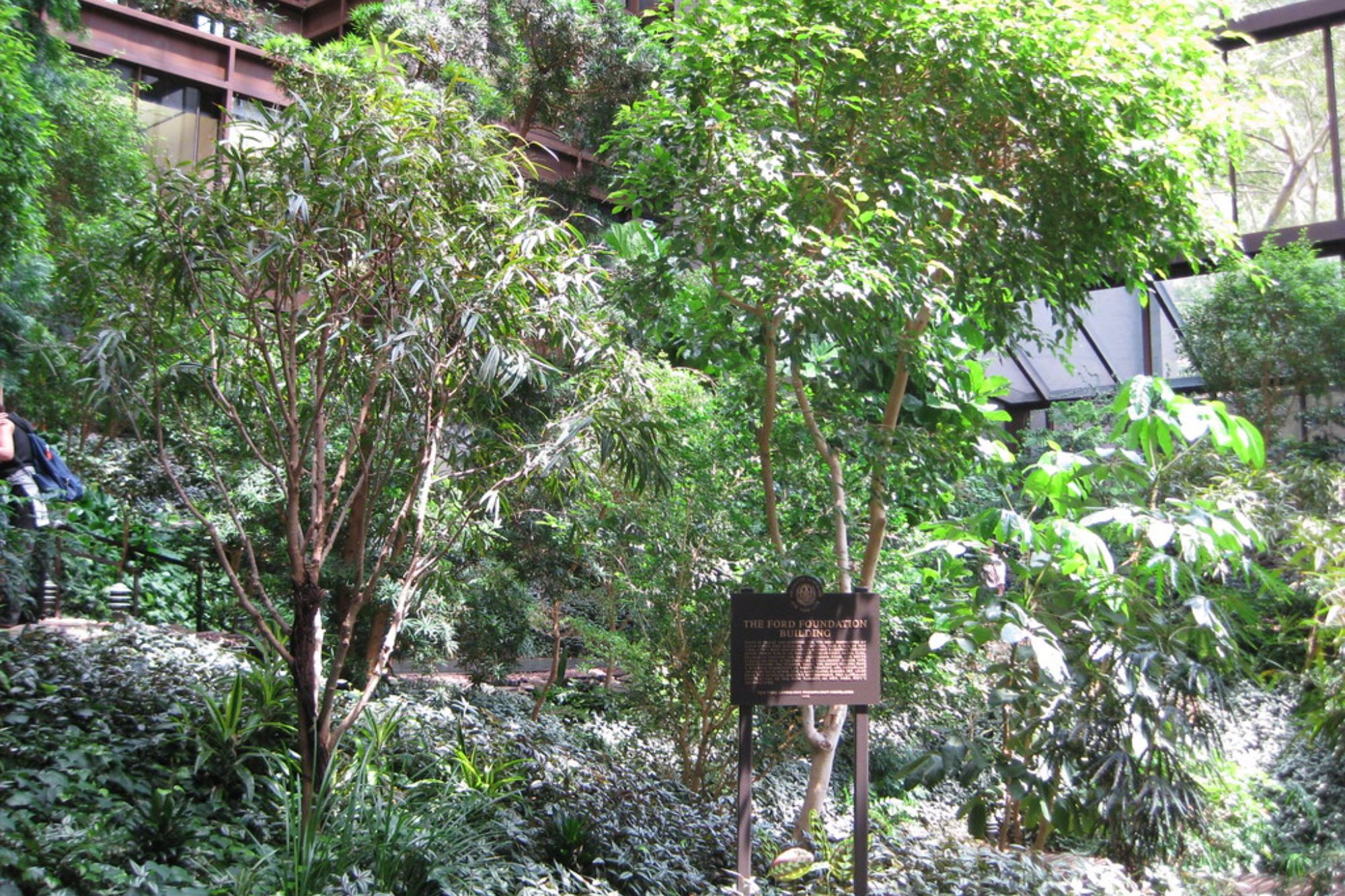
The Ford Foundation building in Manhattan features a 130-foot-tall indoor garden that creates year-round green space in the heart of Midtown. This enclosed forest includes full-sized trees, walking paths, and seating areas that make visitors feel like they’ve stepped into a natural preserve.
The atrium demonstrates how buildings can incorporate substantial vegetation even in dense urban areas with seriously limited outdoor space.
Robson Square

Vancouver’s Robson Square features a series of landscaped terraces and rooftop gardens built over government buildings in the downtown core. The design creates multiple levels of green space that cascade down the city block, connected by walkways and stairs.
This complex shows how entire city blocks can be transformed into layered park systems that serve both practical and recreational purposes.
Like Travel Pug’s content? Follow us on MSN.
Queens Museum Green Roof

The Queens Museum’s green roof in Flushing Meadows Corona Park showcases native plants while managing stormwater for the surrounding area. This installation focuses on local ecology, featuring species that support migrating birds and local wildlife populations.
The roof serves as both an environmental demonstration and a peaceful space where visitors can learn about urban sustainability practices firsthand.
One Central Park
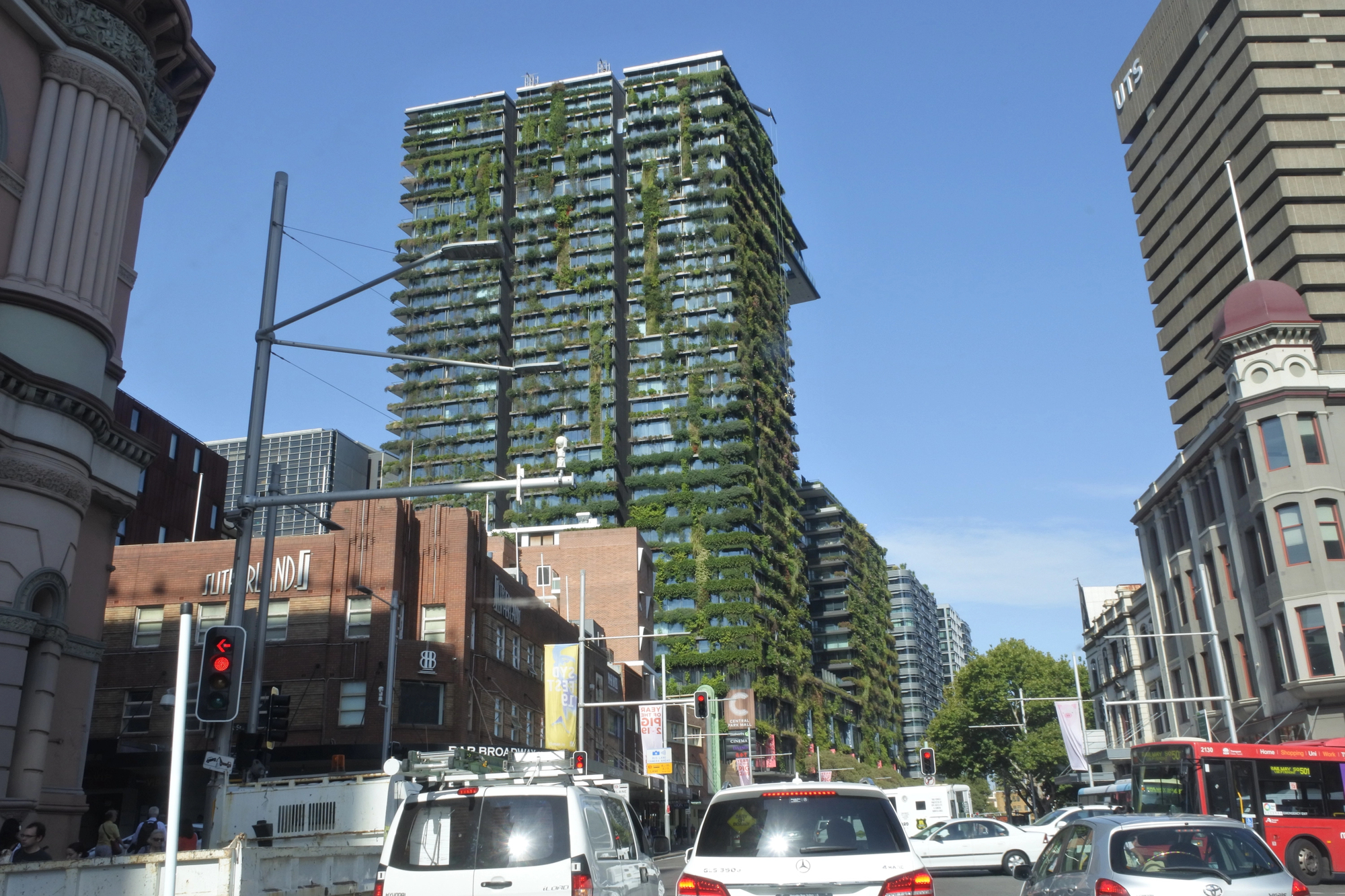
Sydney’s One Central Park residential towers feature extensive vertical gardens designed by French botanist Patrick Blanc that climb the building facades. The living walls incorporate hundreds of plant species that create a habitat for birds and insects while improving air quality for residents.
This project shows how large-scale residential developments can integrate nature into their design rather than completely replacing it.
ACROS Fukuoka Prefectural International Hall
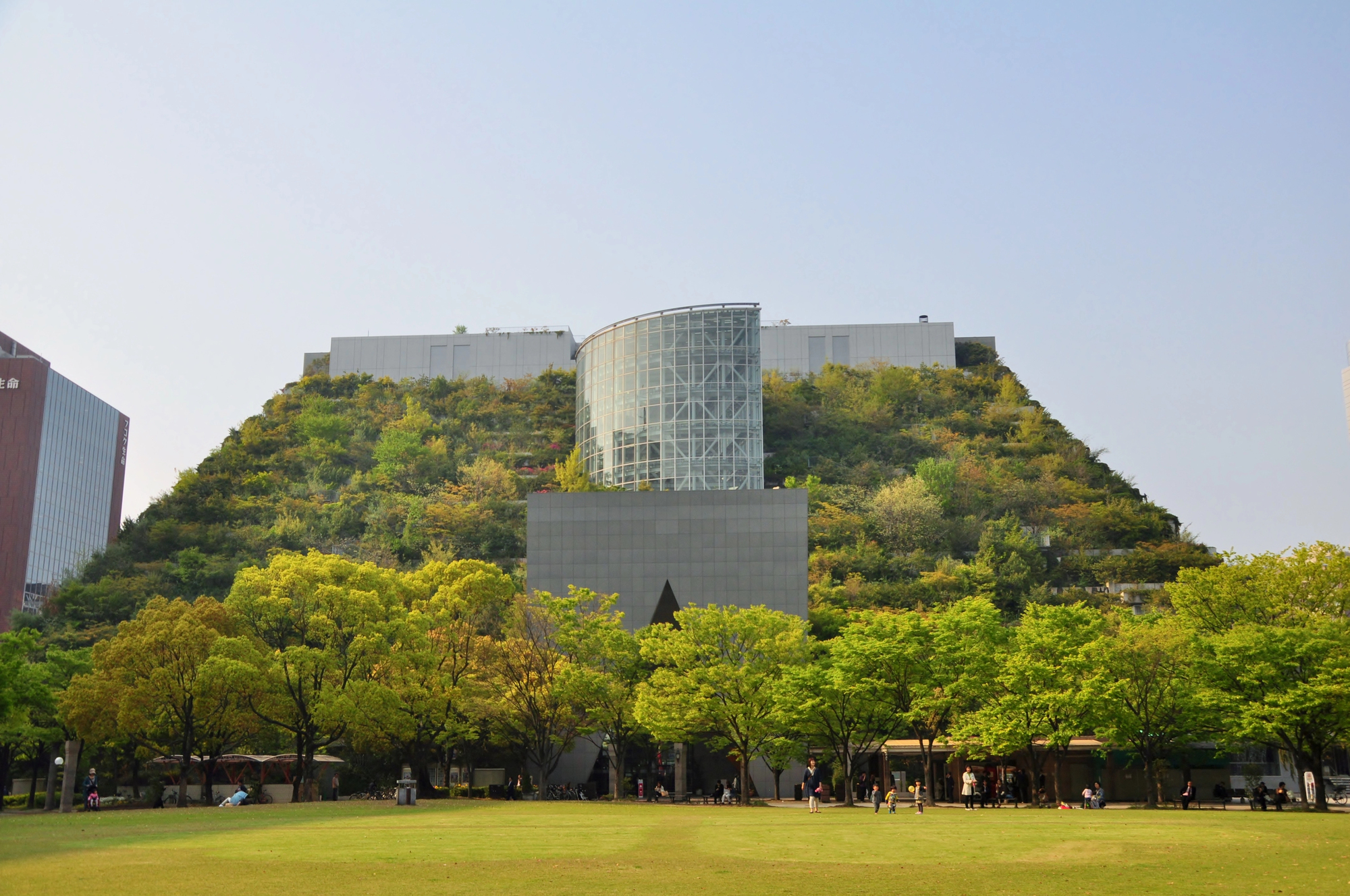
Fukuoka’s ACROS building appears to be a terraced hillside covered in vegetation, yet it actually houses a cultural center and offices beneath its green exterior. The stepped garden design creates multiple levels of outdoor space that visitors can climb like a natural slope in the city center.
This innovative approach demonstrates how buildings can maintain green space equivalent to their footprint rather than eliminating it for development.
Like Travel Pug’s content? Follow us on MSN.
Where Urban Nature Takes Root

These elevated gardens represent way more than just pretty views and Instagram opportunities. They’re fundamentally changing how cities manage stormwater, reduce energy costs, and provide habitat for wildlife that might otherwise struggle in urban environments.
As more cities face mounting challenges from climate change and growing populations, these rooftop oases offer practical solutions wrapped in natural beauty. The next time you’re walking through a city, remember to look up—you might just spot a secret garden floating above the everyday hustle.
More from Travel Pug

- Cities Growing so Fast You Won’t Recognize Them in 10 Years
- 13 Destinations Where Tourists Regularly Regret Their Trip
- 16 U.S. Cities That Are Quietly Becoming Travel Hotspots
- Where to Travel If You Love Long Bus Rides and Daydreams
- 20 Cities Perfect for Solo Travelers Who Crave Adventure & Culture
Like Travel Pug’s content? Follow us on MSN.
